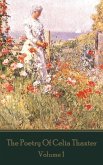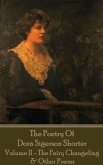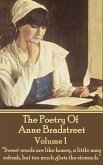Celia Laighton Thaxter was born in Portsmouth, New Hampshire on June 29th, 1835 and spent her childhood years on the Isles of Shoals, initially on White Island, where her father, Thomas Laighton, was a lighthouse keeper, and then the wonderfully named Smuttynose and Appledore Islands. At sixteen, she married Levi Thaxter, her father's business partner, and moved to the mainland, residing first in Watertown, Massachusetts, at a property his father owned. In 1854, they moved to a house in Newburyport and later, in 1856, acquired their own home near the Charles River at Newtonville. Celia had two sons, one of whom was Roland, born August 28, 1858, and would become a prominent mycologist who would later teach at Harvard. Her first published poem was written during this time on the mainland. That poem, "Land-Locked", was first published in the Atlantic Monthly in 1861 and earned her $10. It was to be the beginning of a career that would make her one of America's most popular poets and short story writers. Her marriage with Levi was not perfect, tensions gradually increased. After 10 years she moved back to the islands and her beloved Appledore Island. The marriage was not over but the separations grew longer as Levi didn't share his wife's love of island life. Celia became the hostess of her father's hotel, the Appledore House, and many New England literary and artists stayed thee; Ralph Waldo Emerson, Nathaniel Hawthorne, Henry Wadsworth Longfellow, Henry David Thoreau, John Greenleaf Whittier, Sarah Orne Jewett, and the artists William Morris Hunt, Childe Hassam, who painted several pictures of her and watercolorist Ellen Robbins, who painted the flowers in her garden. Celia was present at the time of the infamous murders on Smuttynose Island, about which she wrote the essay, A Memorable Murder which we have included at the end of this volume of poetry. William Morris Hunt, a close family friend, trying to recover from a debilitating depression, drowned in late summer 1879, an apparent suicide, three days after finishing his last sketch. Celia bore the horror of discovering the body. That same year, the Thaxters' bought 186 acres on Seapoint Beach on Cutts Island, Kittery Point, where they built a grand Shingle Style "cottage" called Champernowne Farm. In 1880, they auctioned the Newtonville house, and in 1881, moved to their new home. In March 1888, her friend and fellow poet Whittier hoped "on that lonesome, windy coast where she can only look upon the desolate, winter-bitten pasture-land and the cold grey sea" she could be comforted by "memories of her Italian travels". Among Celia's most remembered and best loved poems are "The Burgomaster Gull", "Landlocked", "Milking", "The Great White Owl", "The Kingfisher", and "The Sandpiper". Celia Thaxter died suddenly on August 25th, 1894 on Appledore Island and is buried not far from her cottage, which later burned down in the 1914 fire that consumed The Appledore House hotel.
Hinweis: Dieser Artikel kann nur an eine deutsche Lieferadresse ausgeliefert werden.
Hinweis: Dieser Artikel kann nur an eine deutsche Lieferadresse ausgeliefert werden.








